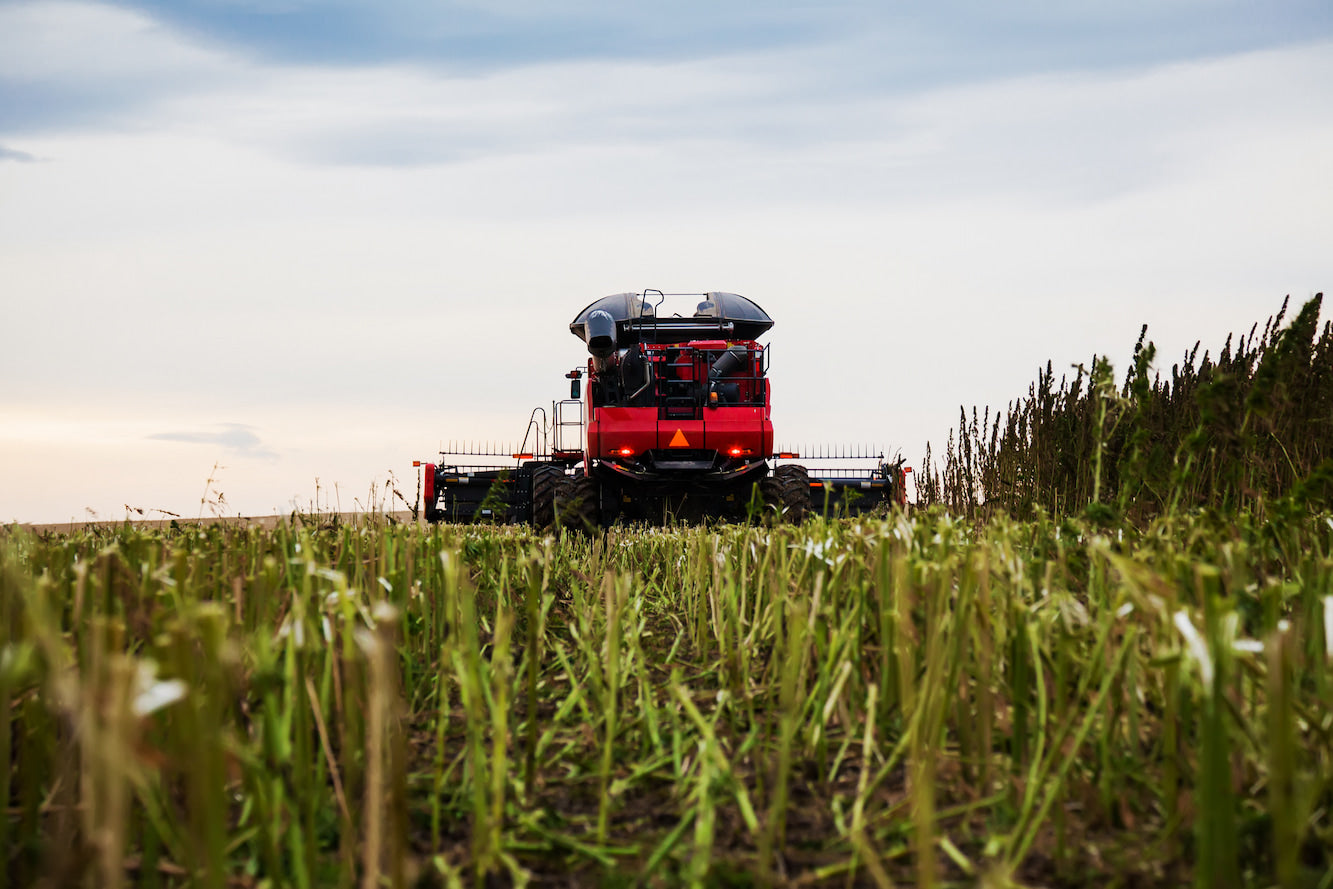CBD Terpenes: What They Are and Their Benefits

There’s so much to be said about the benefits of CBD, but cannabidiol is merely one component of hemp. Hemp is made up of hundreds of valuable compounds. Every hemp plant contains over one hundred cannabinoids and over one hundred terpenes, and every compound is a world of wellness possibilities.
If you use broad-spectrum or full-spectrum hemp extract products, you’re already using terpenes.
Here’s where terpenes come from, what they do, and why they’re important. You may develop a new appreciation for your CBD oil.
The World of Cannabis Strains
Hemp plants are cannabis plants. The only difference between hemp and any other cannabis plant is that hemp plants are grown to produce 0.3% THC or less.
If you’ve ever been to a cannabis dispensary, you’ll notice that there are dozens upon dozens of different strains of cannabis and sometimes hemp. They’re all the same plant, so what makes each strain different?
Strains are distinguished by their unique profiles of cannabinoids and terpenes. No two strains are exactly alike. Although researchers still don’t know exactly how or why different strains of cannabis are reported to produce different effects, the best theory surrounding this effect is that the unique cannabinoid and terpene profiles work to create a different experience for people who use the plant.
Hemp is exactly the same. The only thing different about hemp and traditional plants is the level of psychoactivity. Hemp is extremely low in THC, so hemp-derived CBD products won’t (and physically can’t) get you high. They can, however, provide support to your mind and body in meaningful ways. Terpenes may play a valuable role in shaping the user’s experience.
What Is a Terpene?
Terpenes are aromatic compounds created by plants. If you’ve ever used essential oils in a diffuser in your home, the aroma coming from your diffuser is a result of the terpenes from the plant being released into the air.
In addition to creating pleasant aromas and flavors, many terpenes have other properties that make them valuable to the plant, and potentially valuable to your body.
How Are Terpenes Made?
Many plants produce tiny little white hairs called trichomes. These trichomes cover the green parts of the plant. Vegetables like okra and fruits like raspberries often have trichomes on the outside.
These tiny hairs serve as protection for the plant, and the plant will eventually use these trichomes to produce natural chemicals like terpenoids and cannabinoids by synthesizing and metabolizing natural compounds produced within the plant.
How Do Cannabis Plants Use Terpenes?
Plants are absolutely defenseless. While animals have natural mechanisms to evade or confront potential predators, plants do not. Without some type of defense and propagation system, plants would die. Trichomes play an important role in helping plants reproduce, as well as deterring pests and animals that may eat the plant’s foliage before the plant has completed its life cycle.
Terpenes send messages to the plant’s environment, and plants create a wide variety of terpenes to make their environment ideal. Some terpenes smell revolting to certain pests and animals who may otherwise feel tempted to eat or damage the plant. As animals and pests approach, they smell the terpenes circulating in the air and their senses tell them to stay away from the plant.
Other terpenes entice valuable pollinators to visit. They smell the plant and take an immediate interest in its flowers, helping the plant to achieve its reproductive journey.
Some terpenes provide topical benefits to the plant. Certain terpenes have antifungal or antimicrobial properties that help to protect the plant from disease or ease the impact of common ailments that can negatively impact the overall health of the plant.
What Do Terpenes Do for People?
It’s clear how terpenes benefit the well-being of a plant, but the way they benefit humans isn’t exactly as obvious. Humans don’t need particular aromas to deter predators, nor do we have a need to attract pollinators.
Terpenes are being studied for their potential health applications and impacts on cannabinoid receptors. Researchers are working to determine if the antimicrobial effects of some terpenes may be useful for personal care products like hand sanitizers or skincare formulas.
Currently, terpenes are regarded as powerful aromatherapy tools. Aromatherapy is an effective way to stimulate the senses and modulate the mood. Your olfactory system processes scents and flavors and relays messages to your limbic system, which plays an important role in regulating the way you feel.
Although there is nothing curative about aromatherapy, it’s a very easy way to improve the way you feel or help you change gears. You may need a little extra help relaxing or a small boost of motivation to help you get up off the couch. For some people, aromatherapy can be an incredibly useful and simple tool that simplifies and enriches their lives.
How Many Terpenes Are There?
There are technically over a hundred terpenes in the average cannabis or hemp plant, but some terpenes exist in much higher concentrations than others. Terpene profiles will vary from strain to strain, but almost every strain carries several of the most common terpenes.
Myrcene
Myrcene is an earthy, tangy, and spicy terpene. Myrcene naturally occurs in foods like mango and lemongrass, contributing to their uniquely sour flavor notes. Throughout history, myrcene has been an important component of herbal medicine. Plants containing myrcene (like thyme) have been used to create natural sleep aids. Myrcene is believed to help promote relaxation and relieve stress.
Limonene
Limonene is one of the easiest terpenes to identify simply by smelling it. It’s the unmistakable bright and sour aroma of the zest of citrus fruits like lemon. If you believe you’re smelling limonene, you probably are.
People use limonene terpenes to elevate their moods. Limonene makes many people feel more awake, energized, focused, and creative. It’s like a little shot of caffeine, but without the jittery side effects.
That’s why so many people start their day with a glass of orange juice and it’s also the reason why lemonade is amazing when you’re gardening or mowing the lawn. You get an extra little kick of invigoration from the terpenes in your drink.
Caryophyllene
Caryophyllene is a warm, bitter, spicy terpene. It naturally occurs in black pepper, as well as spices like cloves and cinnamon. It’s what gives them their complex earthy bite. Caryophyllene is a scent that people usually associate with autumn, and it’s abundant in seasonal fragrances and flavors like pumpkin spice.
If you find autumn smells and flavors comforting, you might find caryophyllene comforting. It may trigger your memories of family gatherings, holidays, or nights by the fire.
Alpha-Pinene
Pinene is exactly what it sounds like: pine. The pinene terpene is abundant in (you guessed it) pine trees and pine needles. It smells exactly like the cleaner you use on your floors and the polish you use on your furniture.
You might find that pinene terpenes help you to feel focused and energized. Their sharp, pungent aroma is like a little punch to your brain that might help you kick yourself into gear.
Linalool
Linalool is the primary fragrance note of lavender. You’d be able to pick this terpene out of a lineup due to its distinct complex floral earthiness. It’s a pleasant smell that’s regarded as universally agreeable.
Terpenes like linalool tend to inspire feelings of relaxation. That’s why so many spas use lavender-scented products. Soap, shampoo, and laundry detergents use lavender aromas to create an aura of elegant and blissful sophistication. Linalool might make you feel pampered or sleepy.
Terpinolene
Terpinolene is one of the least common terpenes, but it’s among the most distinct. It’s uniquely floral, citrusy, spicy, and fresh. It naturally occurs in flowers like lilac and fruits like apples. On its own, terpinolene kind of smells like fruity cereal.
It has a very unique aroma that may become lost in the shuffle, drowned out by heavier terpenes found in larger concentrations.
Terpinolene might provide a positive mood boost. Its aroma sometimes makes people feel happy or nostalgic.
Humulene
The cannabaceae family of plants contains two categories: cannabis plants (including hemp plants), and hops plants. Hops are typically used to make beer. Cannabis and beer are technically cousins, and they often share the same aroma and flavor notes of humulene.
Humulene is an important part of ancient Chinese medicine. Historically, humulene has been used to aid in digestion, to suppress appetite, and to support energy production when ingested in the form of a tonic or tincture.
Do CBD Products Contain Terpenes?
CBD comes in many different forms, like broad spectrum CBD tinctures or isolate powder.
Full spectrum CBD products are CBD products with every compound of the hemp plant left intact. Full spectrum products will always contain the terpenes of the plant they were extracted from. These terpenes will vary between varieties of hemp.
Other forms of CBD, like CBD Crystals, don’t contain any terpenes. This doesn’t mean that CBD isolate products aren’t beneficial. They’ll still provide virtually all of the benefits directly specific to CBD and cannabis sativa. They simply won’t provide the extra benefits that terpenes bring to the table. Isolate products are most beneficial for people who cannot ingest the trace amounts of THC that full spectrum products contain.
How Do Terpenes and Cannabinoids Work Together?
A highly promising theory called the entourage effect postulates that whole cannabis extracts are more potent and beneficial than isolated cannabinoids or terpenes. All of these compounds are naturally balanced by the plant they came from, and they’re designed to work together to support the plant’s wellbeing.
The entourage effect is the theory that these cannabinoids will work the same way within your body. Cannabinoids and terpenes can mitigate, dampen, or enhance the effects of other cannabinoids.
When you use full spectrum cannabis extracts, your body will process and use the valuable compounds in the way it sees fit.
evo hemp’s Full Spectrum CBD Contains Terpenes
Our full spectrum CBD is made with organically grown whole hemp extract, with naturally occurring terpenes and plant compounds. There’s nothing wrong with the way nature made hemp. Why meddle with a perfect thing?
Sources:
Hemp Production and the 2018 Farm Bill - 07/25/2019 | FDA
Trichome Formation: Gibberellins on the Move | National Institutes of Health
- Tags: CBD



